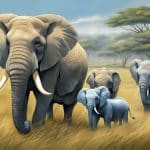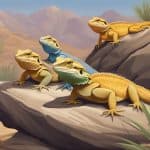Types Of Big Cats
What are the different types of big cats? The word “big cat”, although not used in classification by binomial nomenclature, it’s used to distinguish larger members of the family Felidae. These types of big cats include tiger, leopard, lion and jaguar, all of which belong to the genus Panthera. These are the major types of big cats although the following can also be classified as big cats: cougar, cheetah. This family is composed of animals with very unique characteristics; such as the most ferocious animal in the planet and the fastest animal on the planet.
Although various legislations have been formed to protect different types of big cats, it’s still not enough as these wonderful creatures must be protected in our ecosystem. It is quite unfortunate that they are becoming extinct at a very fast rate due to malicious human activities such as poaching and continuous destruction of their habitat. The different types of big cats are evenly distributed across the globe except for the Antarctica and Australia. Although these cats share the same family – Felidae, they display clear differences when it comes to matters of their habitats, feeding habits, behaviours etc.
Jaguar (Panthera onca)
It’s one of the many types of wild cats dominating South America It’s very unique and caning. It can swim or climb trees to get their prey. In most cases, they kill their prey with a single powerful bite. Jaguars are tan in color with black spots on their bodies. Just like other types of big cats, jaguars also mark their own territory. The female may give up to four young ones who are also taught how to hunt by their mothers.
Leopard (Panther pardus)
These types of big cats always mark their territories using their urine and claws. They are nocturnal big cats who patrol within their territories each time. Leopards also store their prey on trees and they are characterized with short legs, broad legs, long body with the body covered with “rosettes”. They always such their young ones for 3 months and after six to seven months they are taught how to eat meat.
Cheetah (Acinonyx jubatus)
This is another unique cat. These types of big cats are the fastest in the whole world. Its tail plays a very significant role in ensuring its stability while at very high speeds especially while negotiating corners. They have a very distinctive small heads, stripes, are slender, tan with some black spots on the body. They are mostly found in savannah grassland which acts as a camouflage against the poachers and favours them to get hold of their pray more easily. They are mostly found in most parts of Africa and The great Asia.
Lion (Panthera leo)
These are the only types of big cats with a very unique characteristic; they live as a group called pride. A pride consists of a number of lionesses and about three male plus the young ones. However, the young males leave the pride as soon as they mature to head other prides or live as nomads. They prefer grasslands and open stretches of land where they can comfortably hunt their food. As with all other big cats, they are very territorial and mark their zones with urine and secretions from anal glands.
The Tiger (Panthera tigris)
The tiger is the largest of the big cats and its natural habitat is within Asia, stretching from Russia to India. It is instantly recognizable from its orange fur, which has dark vertical stripes on it. Fully grown tigers can attain a body length of more than 3mts and a weight of more than 300kgs. It is a solitary animal that will only be seen in the company of another tiger during the mating season or if it’s a tigress with her cubs. It hunts during the day and night. It is the most endangered of the big cats, because its habitat falls within a densely populated region of Asia. Its population in the wild is estimated at less than 4,000, and since the turn of the century, 3 of its subspecies have gone extinct. Consequently, there are only 6 subspecies barely holding on: The Bengal, The Siberian, The Sumatran, the South China, The Malayan, and the Indochinese.






